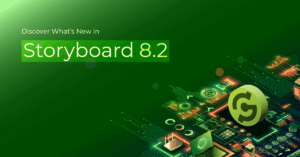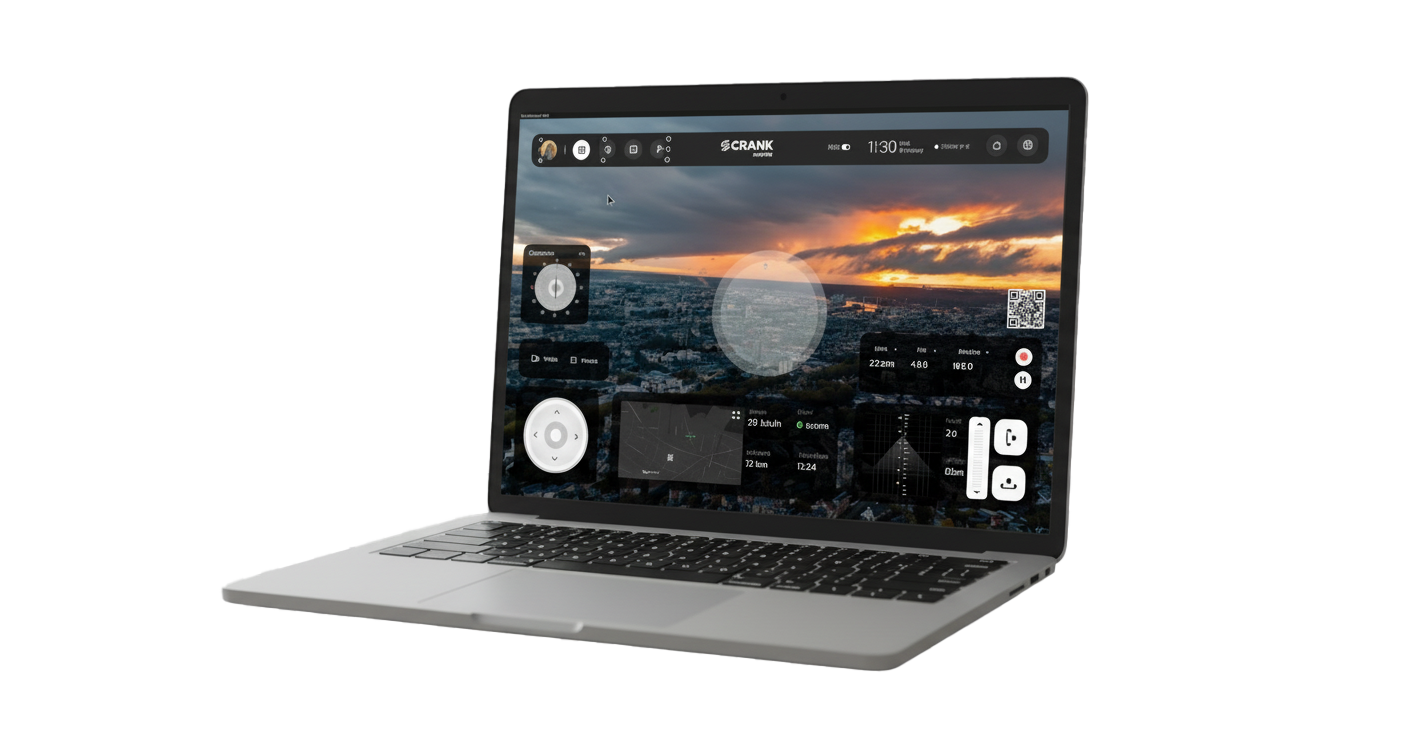
Unlock next-generation HMI development with Storyboard 9.0. Discover new levels of design freedom, application efficiency, and scalability for your embedded products.
Our brands

Our brands

Related articles

What’s New in Storyboard 8.2
Discover the full details of the Storyboard 8.2 new features, including the streamlined UI, integrated I/O connector, enhanced Figma integration, and low-power mode. Learn how these updates make embedded GUI...
Read more
Use Case: GUIs made easy
Read more
The Landrovers
Read more
Logic Technology enables smart and sustainable EV charging development
Read more
Adapting Embedded GUIs to Meet Increased UX Expectations
Read more
Crank Storyboard 9.0, the embedded GUI tool from Crank Software, is engineered to accelerate your product development by offering new capabilities that elevate performance and reliability. This release introduces a framework that allows you to design sophisticated interfaces without creative limitations and deploy them with maximal efficiency. Storyboard 9.0 delivers the scalable architecture required to meet evolving product demands, transforming complex HMI creation into a streamlined process.
General Features of Storyboard
All Storyboard solutions are designed for fast, robust, and reliable in-circuit development of Human-Machine Interfaces (HMIs) for microcontrollers, SoCs, and application processors. They simplify the embedded GUI process by providing:
- Cross-Platform Compatibility: The tool supports development on Windows, Linux, and macOS, with deployment across a vast range of embedded operating systems (RTOS, Linux, Android) and hardware.
- Design-to-Deployment Workflow: Storyboard supports diverse interfaces (such as Lua scripting, C/C++ integration) and operates in a seamlessly integrated environment.
- Maintenance & Support: Users benefit from complimentary software and runtime updates, ensuring long-term project viability.
- Performance Focus: The Storyboard runtime is highly efficient, guaranteeing smooth performance, quick boot times, and responsive interactivity, critical for resource-constrained devices.

Storyboard 9.0 Enhancement Comparison:
Storyboard 9.0 introduces key improvements across design flexibility, workflow, and application performance. Here is a breakdown of the core updates:
| Enhancement | Description & Technical Impact | Use Cases & Development Value |
| Dynamic Screen Resolution | Description: Layers now leverage a unified layout architecture supporting scalable content rendering. This uses relative sizing, proportional scaling, and anchor-based positioning. | Use Cases: Ideal for product lines with varying screen sizes (e.g., smart appliances or vehicle clusters). Value: Enables a true "design-once, deploy-anywhere" workflow, drastically reducing time spent on device-specific layout adjustments. |
| Nested Scenes and Controls | Description: Eliminates the constraint on control nesting from prior versions, enabling developers to apply specific styles and behaviors at a granular, single-control level within the hierarchy. | Use Cases: Perfect for building complex, modular UI layouts. Value: Lowers layout complexity and reduces rework, ensuring designs are flexible and easily maintainable when making late-stage changes. |
| Lua Scripting Optimisation | Description: Introduces direct action triggering and variable listeners, allowing the UI to automatically react to data changes without constant polling or bulky event queues. | Use Cases: Essential for data-driven interfaces like medical monitors or industrial control panels. Value: UI logic runs leaner and faster, delivering immediate responsiveness and maximizing performance on resource-limited hardware. |
| Enhanced Figma Workflow | Description: Features improved asset import, where stroke layers are rendered as highly efficient fill extensions, and interactive Figma frames import directly as functional screens with transitions. | Use Cases: Bridges the gap between designer prototypes and final embedded assets. Value: Guarantees that the designer’s vision is preserved exactly, removing the need for manual reworks and accelerating the iteration and debugging loop. |
| Component Library Suite | Description: A new package of widget-style, ready-to-deploy components is included, such as Checkbox, Slider, Dropdown, and Button components. | Use Cases: Rapidly assembling standard UI elements for any embedded product. Value: Components are customizable and reusable; updates made to a single component instance propagate across the entire UI, simplifying maintenance and speeding up application assembly. |
| Reliable Testing Features | Description: A new Validator test action is introduced, which forces test execution to pause and wait for specific screen transitions or rendering to complete before proceeding. | Use Cases: High-volume automated quality assurance for multi-screen workflows. Value: Guarantees reliable automated testing by synchronising actions with actual screen state, eliminating the risk of race conditions and flaky test results. |
Storyboard 9.0 redefines embedded GUI development with unparalleled design freedom, UI application efficiency, and development scalability. Depending on your hardware target and specific market requirements, Crank Software provides the high-performance solution you need.

Gilles Hendrikx
Build Acceleration | Boards | UI | Development
design-centric, decoupled workflow
Crank Software is based on the phylosophy of a Decoupled architecture (UI ↔ business logic) — the UI is separated from backend code so designers and developers can work in parallel and validate UI changes earlier without disturbing embedded logic. That's what saves you time and money and keeps your product agile. Let's test how that works in your workflow.